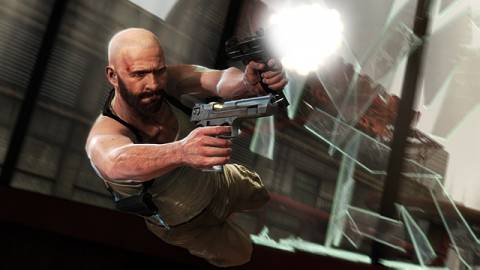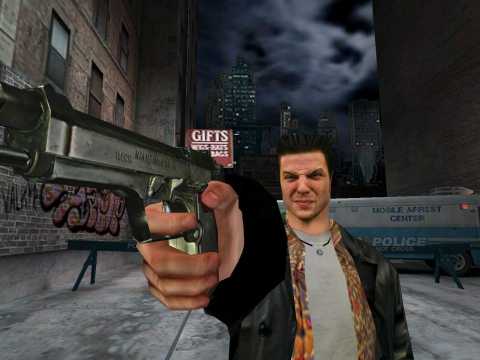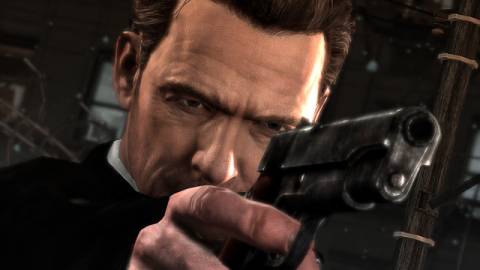Reintroducing Maximum Payne
By ElectricBoogaloo 19 Comments
After a nine-year absence and a shift in developer, Max Payne 3 was always going to be a curious title. Its early reveal, presenting a bald, overweight Max Payne amidst the slums of Brazil, was steeped in trepidation for fans of the series. This was a character well known for his slick stylings, leather coat and bad tie combination; a perfect protagonist for the surreal film noir world he inhabited and the frozen backdrop of a crime riddled New York City. Max had his inner demons but they were buried beneath the surface of graphic novel panels and John Woo inspired action.

In Max Payne 3 these issues bubble to the surface, no longer confined to introverted and metaphorical inner monologues and disturbing dream sequences laden with crying babies and trails of blood symbolic of his inner torment. This is an increasingly dishevelled Max Payne, with greasy hair, a scruffy beard and a constant drink almost embedded to one hand. His gloomy nights are spent drenched in sweat, throwing up into a sink before passing out in a drunken stupor; alcoholism taking its toll on an aging body and disturbed and broken mind. Rockstar Games and the Houser’s brand of storytelling and character development – not to mention tales of redemption - are certainly well equipped to handle this modern Max with the verve and vigour we’ve come to expect. But is it a shift suited to the character’s trappings and Remedy’s original vision?
This is a series known for its idiosyncrasies after all. Beyond the film noir and John Woo influences, Max Payne’s graphic novel panels are more than just a stylistic inclusion but a tone setter for some of the games more unique eccentricities. Like the graphic novels of print they delve into subjects film noir wouldn’t dare touch. WhileMax Payne doesn’t go as far as something like Sin City it does often veer into the unnatural with relative ease. The breaking of the forth wall is one such technique, while themes of Norse mythology, the Illuminati and the insanity of Mona Sax’s funhouse quickly follow suit to form some of Max Payne’s more self-aware and aberrant moments. It’s quirky and gives the series its own signature touch, effectively garnering a devoted fan base with its avant-garde nature as well as its distinctive gameplay mechanics.

With Rockstar taking the mantle, those ideologies have changed. Max Payne 3 loses its self-awareness and unconventional nature in favour of a gritty story grounded in realism; taking cues from films like Man On Fire and Michael Mann’s extensive filmography as Rockstar’s fascination with Hollywood so often does. The series’ film noir trappings still remain, but away from the snow swept streets of New York City they feel out of place amongst the humidity of Brazil. This is further compounded by a Max Payne who’s down on his luck, his often times humorous and metaphorical inner monologue replaced with writing that is more self-deprecating and verging on the depressing, delving into the psyche of a tormented individual full of remorse. It might not be classic Max but it suits the granular narrative he finds himself embroiled within.
Rockstar often touch on real-world issues in their games using their unique platform to provide some kind of social commentary on recent events. Max Payne 3’s look at the rich/poor divide between Sao Paulo’s glistening metropolis and its crumbling favelas provides the backdrop for a story heavy on slimy characters who double and triple cross each other at every juncture. The death toll rackets up into the bloody thousands, and as Max’s story progresses further and further his predicament worsens to a sickening degree. Violence and brutality is strewn throughout, and while it’s disturbing it loses some of its impact because this isn’t a personal story for Max. Unlike the first two games he is a passenger on this Brazilian rollercoaster, doing what he does because he feels it’s the right thing to do; fuelled by illusions of grandeur and a want to end it all, rather than vengeance for a dead family. You pity Max and his destitute state, but as the story progresses the expert character development at the heart of the experience puts you in love all over again.

This isn’t a deeply personal story and it might lose Remedy’s singularity, but the plight and rebuilding of Max Payne is an inherently engaging character tale that’s hard not to revere. His appearance changes from chapter to chapter as his wearisome and haggard state worsens. When he shaves off his hair and begins his road to redemption there’s a moment of elation as he becomes the avenging hero. His appearance signals his passage from worthless drunkard to a focused man on a mission as well as any of the game’s accomplished dialogue. It’s cinematic and modernises Max within this Hollywood-influenced story the same way its inclusion of cover does within the third-person shooter landscape. This is Rockstar’s way of doing things, and while fans of Remedy may not appreciate all of their changes, it gives Max a new lease on life, proving that he is one of video game’s saving graces. He deals with personal issues, taking us on a fascinating character arc that ends with a satisfying conclusion and a phenomenal pay-off for Max’s depressing beginnings. He grows into something wonderful, and all the world burns around him.
Even without its peculiarity Max Payne 3 succeeds at modernising a returning hero, bringing him into the 21st century with a superb character arc that stands defiant amongst so many generic one-note protagonists. He has deep issues and feels like a real person even as his boat hurtles through the air in slow motion, Max leaning over its side to rain down a hail of bullets on a fleeing gang. Its action is ridiculous, its story lacks real meaning aside from a thought-provoking message, but Max remains a constant source of enjoyment. We can only hope his journey hasn’t yet reached its explosive conclusion.
